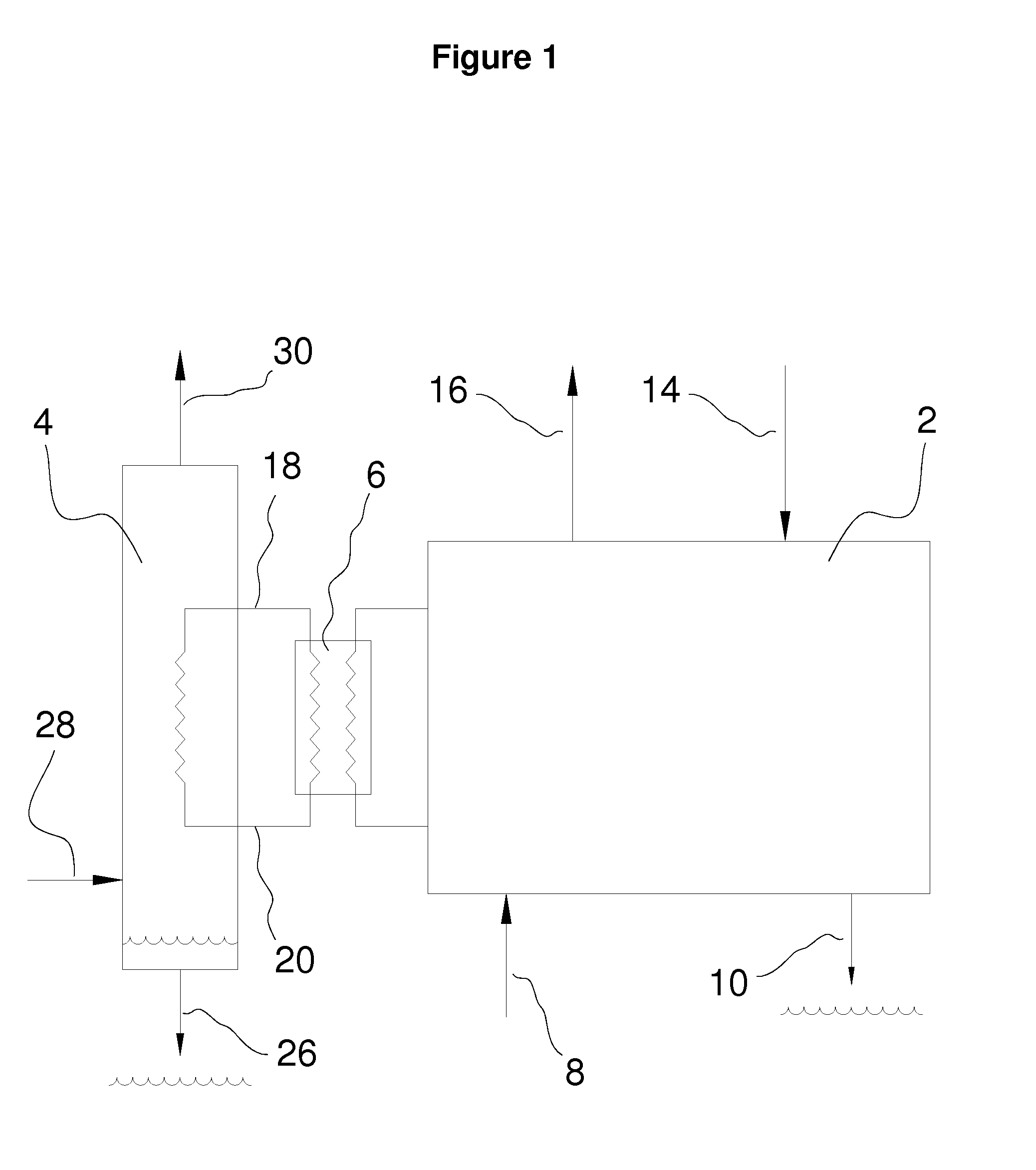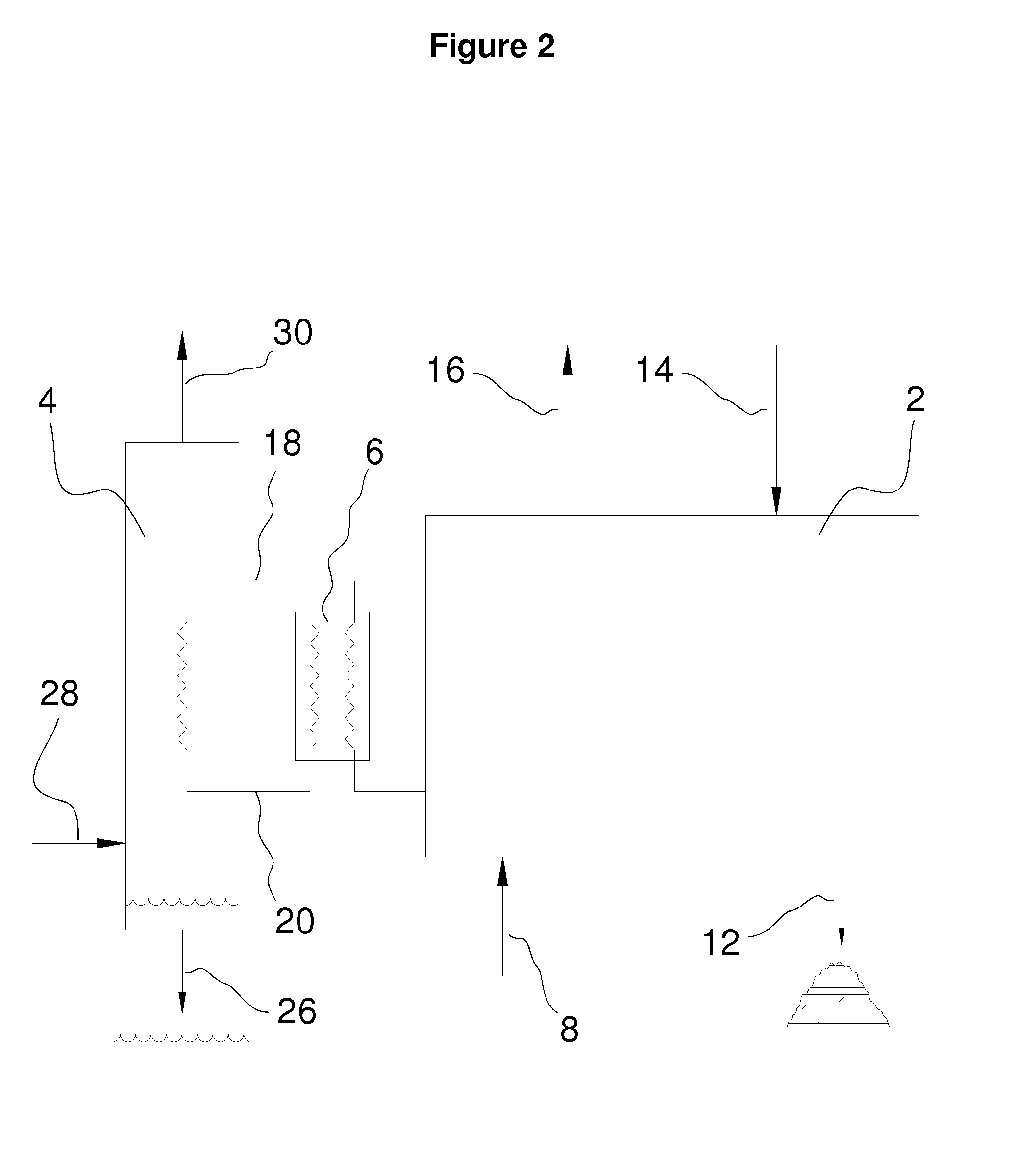System and method for wastewater reduction and freshwater generation
a technology of freshwater generation and wastewater, applied in vacuum distillation separation, separation processes, vessel construction, etc., can solve the problems of poor quality, wastewater, which is often generated, and can be essentially useless, so as to reduce environmental liabilities, low operating costs, and low chemical requirements
- Summary
- Abstract
- Description
- Claims
- Application Information
AI Technical Summary
Benefits of technology
Problems solved by technology
Method used
Image
Examples
Embodiment Construction
[0027]The following numerals are used as references in the figures: Wastewater evaporator 2; Combustion gas contactor 4; Wastewater evaporator heat exchanger 6; Wastewater Inlet 8; Concentrate / reduced water outlet 10; Solids and crystals outlet 12; Cooling air inlet 14; Cooling air outlet 16; Cold coolant 18; Warm coolant 20; Cold freshwater coolant 22; Warm freshwater 24; Fresh water outlet 26; Hot combustion gas inlet 28; Cool combustion gas outlet 30; Warm untreated freshwater 32; Freshwater treatment 34; and Treated freshwater 36.
[0028]Reference is now made to FIG. 1 which is a process diagram of a preferred embodiment of the present invention wherein a cold coolant 18 is circulated between a wastewater evaporator heat exchanger 6 and a combustion gas contactor 4. This coolant cools the incoming combustion gas 28 via an indirect contact heat exchange process internal to the combustion gas contactor. The combustion gas, sometimes also referred to as a flue gas in the art, is cool...
PUM
 Login to View More
Login to View More Abstract
Description
Claims
Application Information
 Login to View More
Login to View More - R&D
- Intellectual Property
- Life Sciences
- Materials
- Tech Scout
- Unparalleled Data Quality
- Higher Quality Content
- 60% Fewer Hallucinations
Browse by: Latest US Patents, China's latest patents, Technical Efficacy Thesaurus, Application Domain, Technology Topic, Popular Technical Reports.
© 2025 PatSnap. All rights reserved.Legal|Privacy policy|Modern Slavery Act Transparency Statement|Sitemap|About US| Contact US: help@patsnap.com



